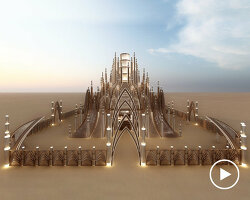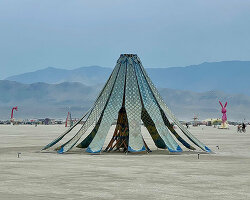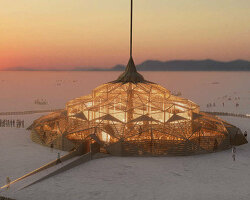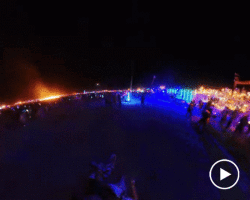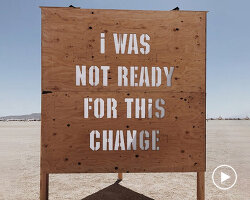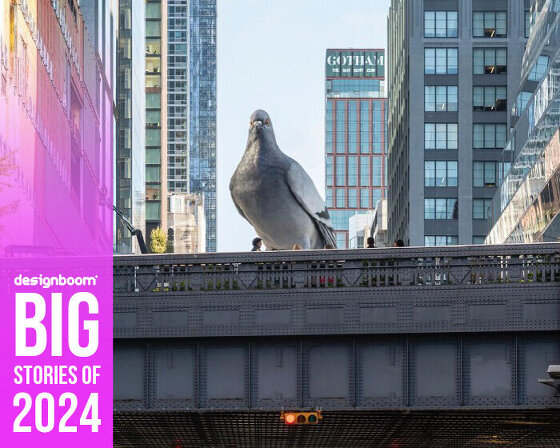KEEP UP WITH OUR DAILY AND WEEKLY NEWSLETTERS
PRODUCT LIBRARY
the largest exhibition dedicated to the artist in france is now on view at the grand palais in paris, bringing together large-scale installations, sculptures, photographs, drawings, performance videos and archive documents.
from monumental murals to ephemeral installations, here are the top 10 public art projects of 2024 that shaped the year in creativity.
from art and design fairs, to public art activations and museum exhibitions, explore all the highlights taking place from december 1st — 8th.
across twelve themed galleries, the first-of-its-kind show at qatar's national museum traces the evolution of pakistan's visual arts and architectural practices over the past eighty decades.
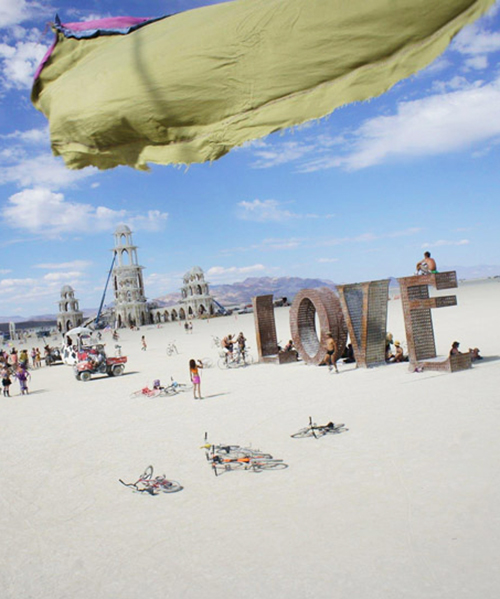
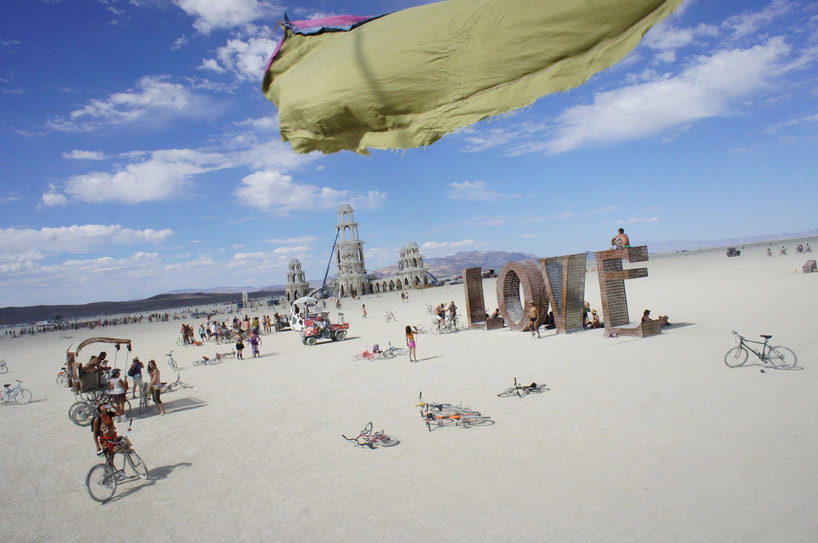 wide-view of the playa as seen from atop a living-structure image courtesy of bryan snyder
wide-view of the playa as seen from atop a living-structure image courtesy of bryan snyder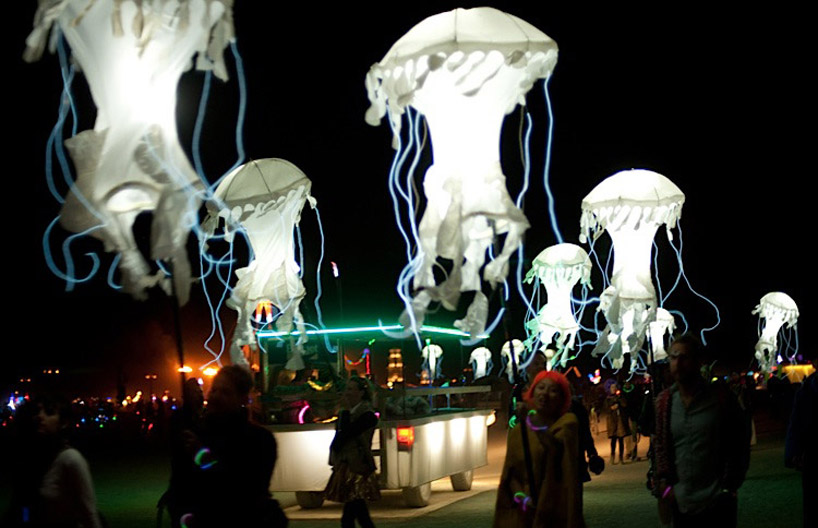 jellyfish-like lanterns carried by festival goers in an act of collective public performance and inclusivity. image © patrick roddie
jellyfish-like lanterns carried by festival goers in an act of collective public performance and inclusivity. image © patrick roddie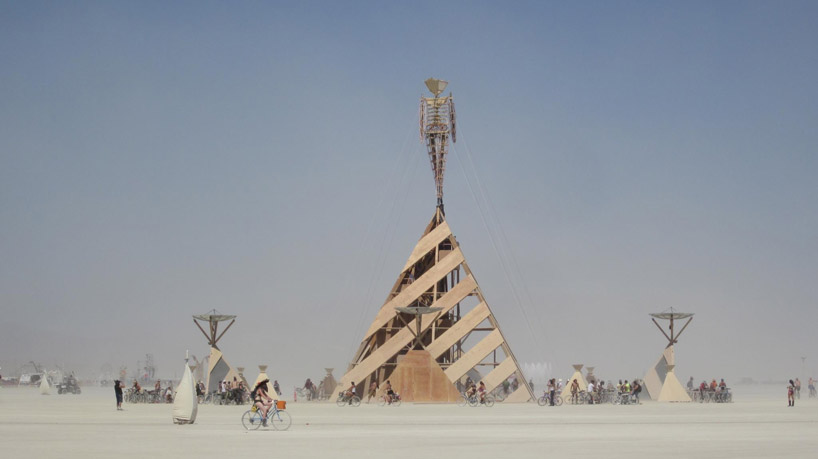 the consistency of shape is both a nod to the original shape of the man as well as homage to the black rock city location image courtesy of nick wolfe
the consistency of shape is both a nod to the original shape of the man as well as homage to the black rock city location image courtesy of nick wolfe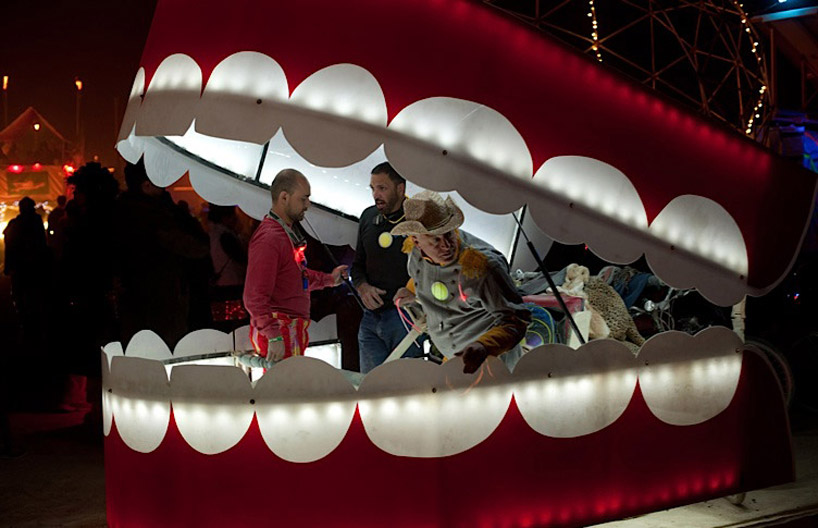 one of the several mutant vehicles accepted by burning man’s own transportation registration system image © patrick roddie
one of the several mutant vehicles accepted by burning man’s own transportation registration system image © patrick roddie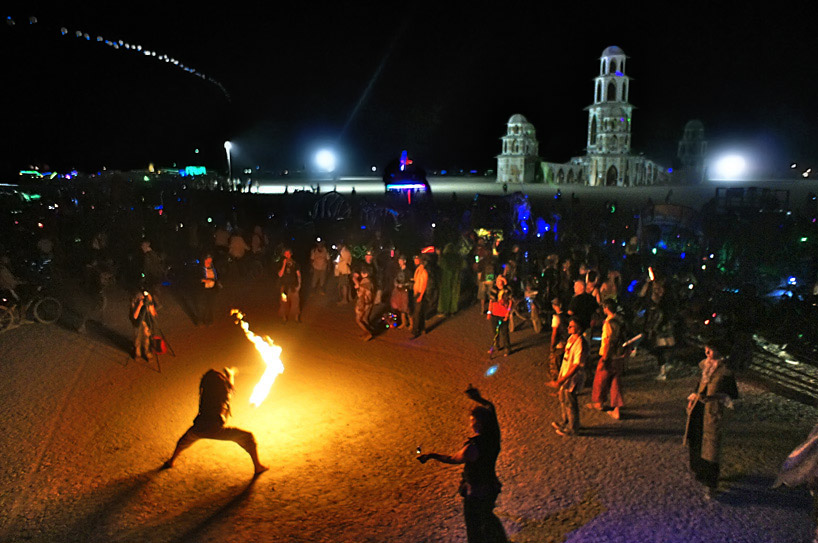 performance art such as fire spinning is widely practiced and appreciated at burning man image courtesy of bryan snyder
performance art such as fire spinning is widely practiced and appreciated at burning man image courtesy of bryan snyder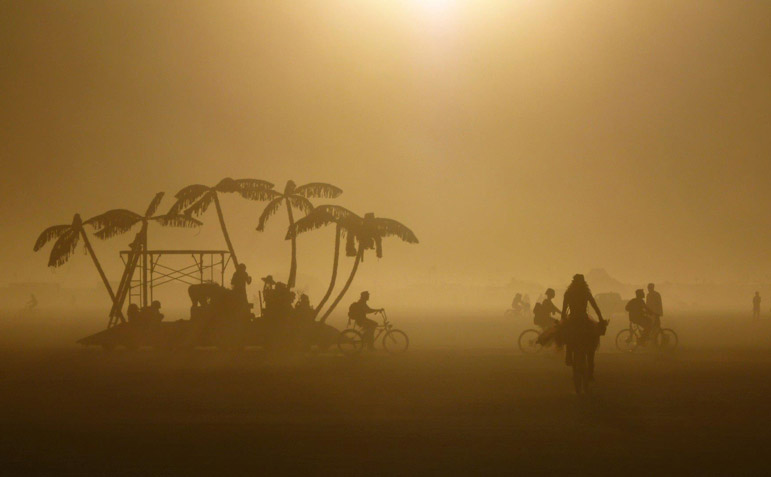 the harsh conditions of black rock city create necessity for community members to properly attire themselves image courtesy of bryan snyder
the harsh conditions of black rock city create necessity for community members to properly attire themselves image courtesy of bryan snyder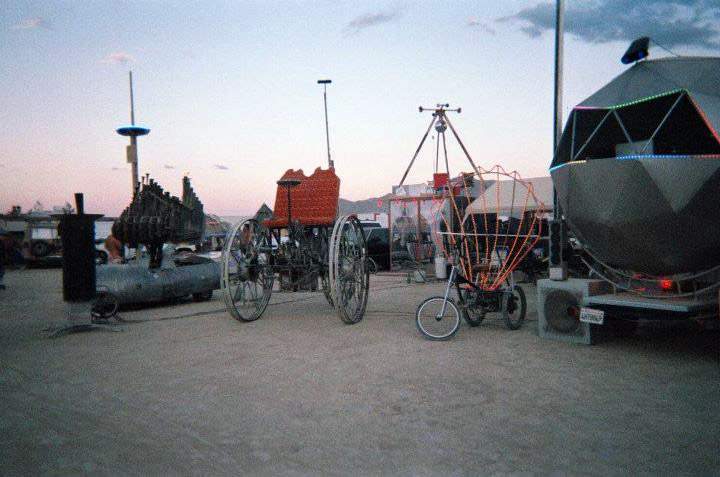 art-bikes yet are another platform in which community members may choose to express themselves image courtesy of michael lattizori
art-bikes yet are another platform in which community members may choose to express themselves image courtesy of michael lattizori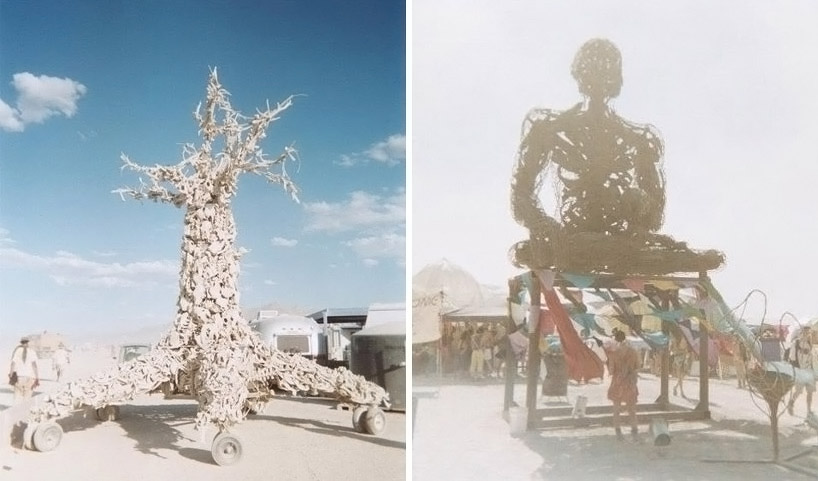 sculpture works by unknown artists images courtesy of michael lattizori
sculpture works by unknown artists images courtesy of michael lattizori 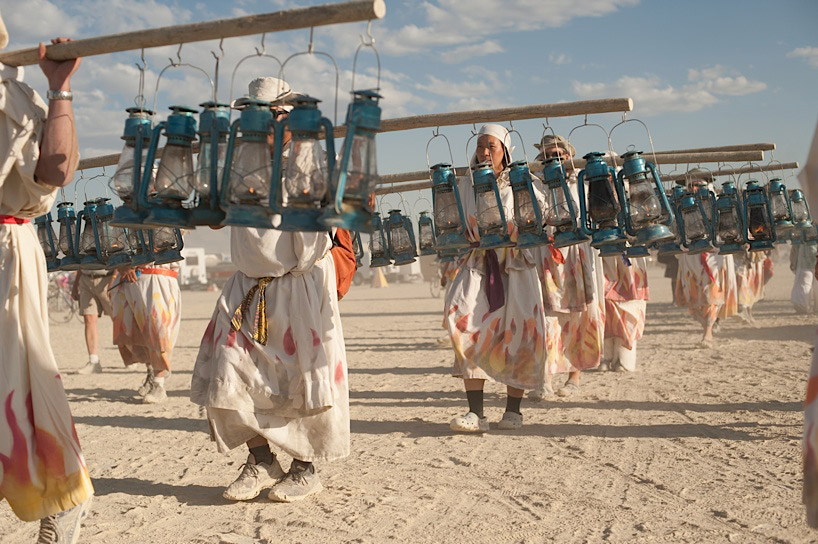 collective performance art installation on the playa image © patrick roddie
collective performance art installation on the playa image © patrick roddie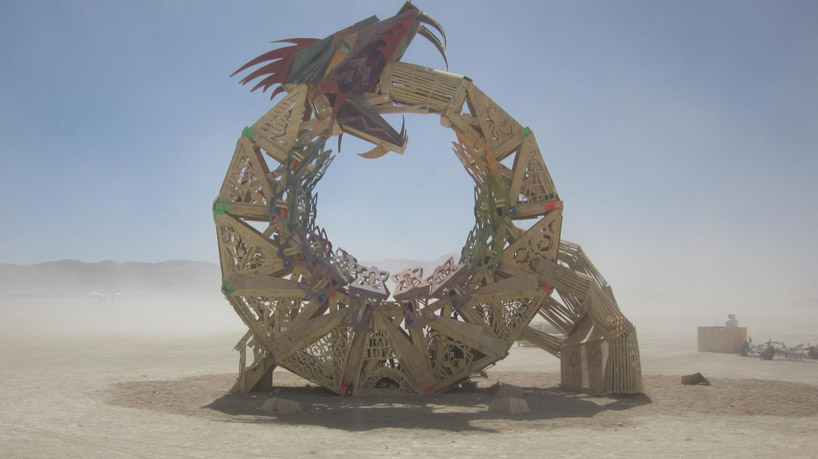 wooden circular snake sculpture by an unknown artist image courtesy of nick wolfe
wooden circular snake sculpture by an unknown artist image courtesy of nick wolfe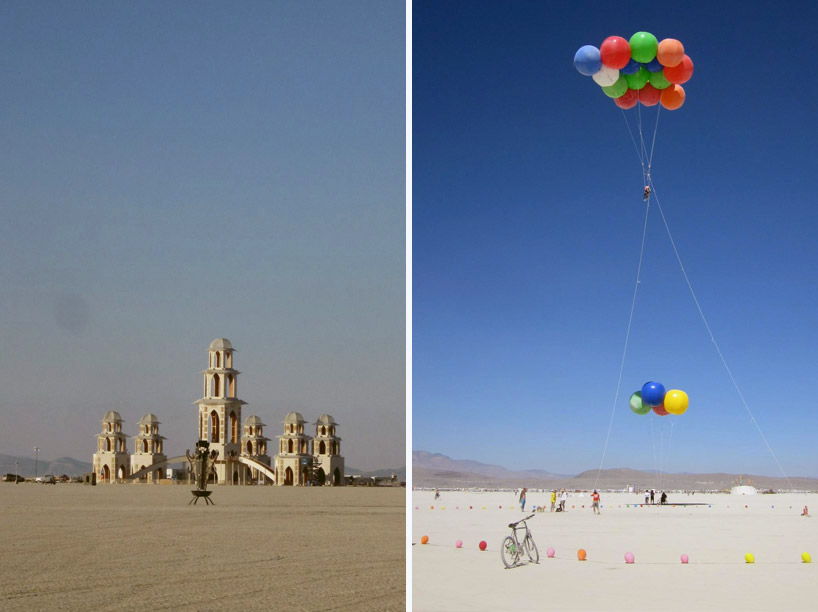 images courtesy of nick wolfe
images courtesy of nick wolfe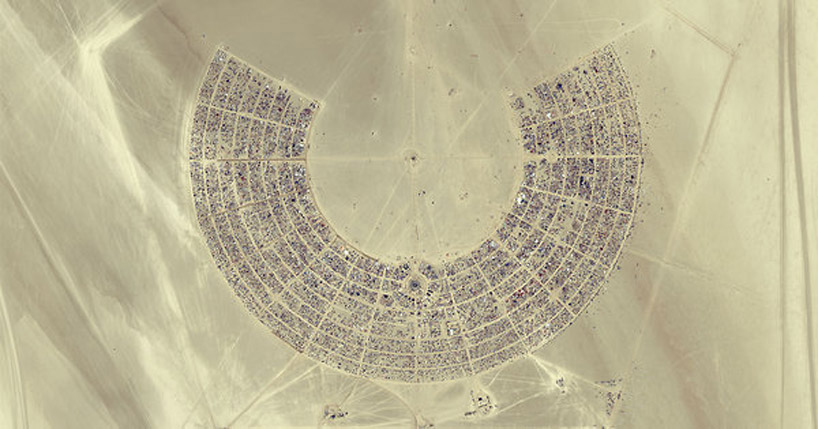 aerial view of black rock city, nevada, USA, home of the burning man festival image courtesy of geoeye
aerial view of black rock city, nevada, USA, home of the burning man festival image courtesy of geoeye 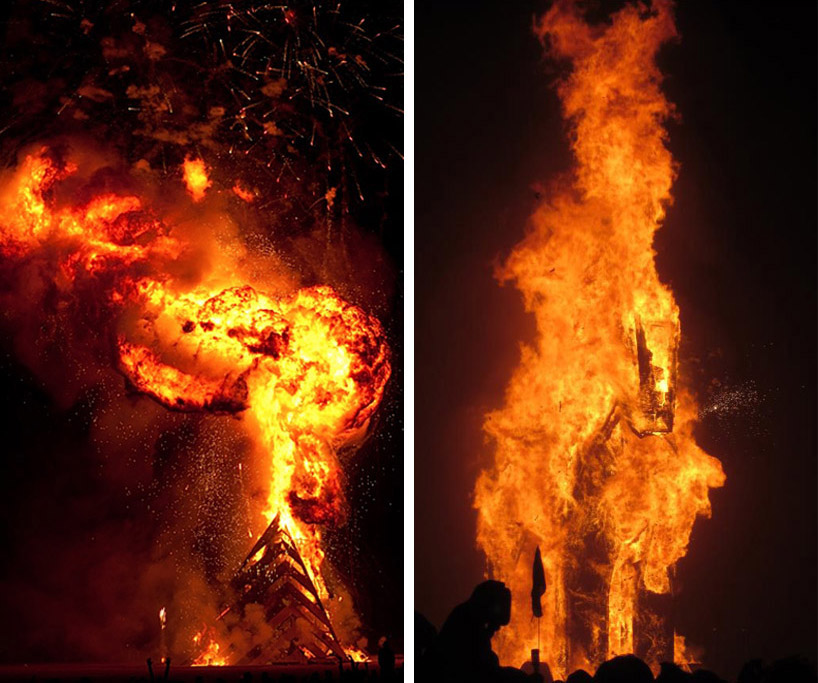 left: the man, mid-way through the burn on the final evening of the festival right: the wooden horse sculpture as seen mid-burn. image on left ©
left: the man, mid-way through the burn on the final evening of the festival right: the wooden horse sculpture as seen mid-burn. image on left © 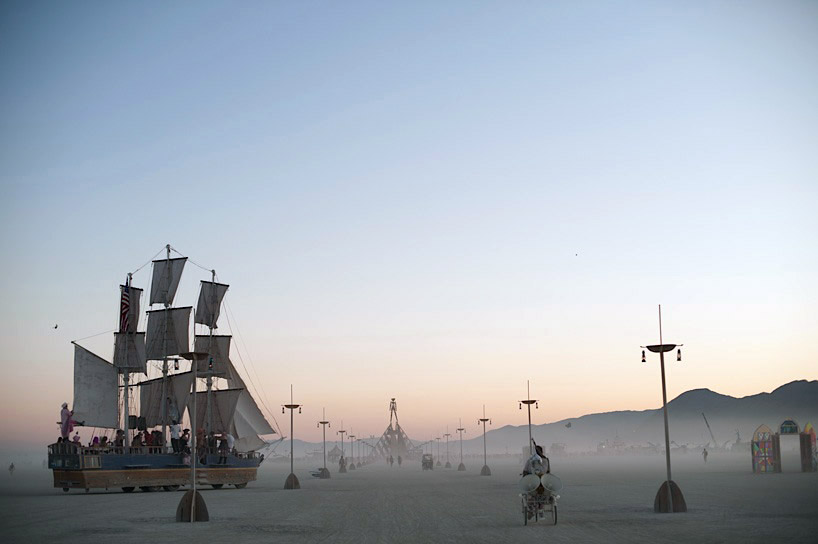 a mutant vehicle, navigates the playa, pointed in the direction of the man image © patrick roddie
a mutant vehicle, navigates the playa, pointed in the direction of the man image © patrick roddie